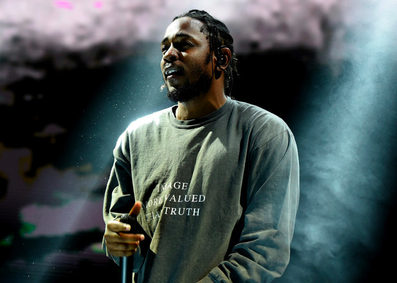Kendrick Lamar as an artist is heavily influenced by the rap and hip hop genres. The song DNA is no exception to those rules. Google and Pitchfork both describe the song as Rap/Hip Hop. The “rap” stems from the rhythm and cadence of the vocals and emphasizing speaking over singing, and the hip hop comes with the elevated bass and “trunk rattling 808s”, as Rolling Stone describes the song, which was voted 64th in best songs of the century so far in an article from 2018. In the same article, the producer of the album describes why he chose the specific cadence of the background music, especially at the end. He said that Kendrick actually rapped the ending of the song (the fastest and angriest part) a cappella, and then later on added the drum beat around it. The producer said that since Kendrick had such a raw and high energy verse, he wanted the beat to sound like Kendrick is actually “battling the beat”.
I believe that DNA is an interesting song because even though the lyrical delivery and beat are at the forefront, there are a few key elements that challenge the stereotypical Rap/Hip Hop song. The first is that the song in itself is virtually divided into two “halves”. About two minutes into the song, there is a sample of a FOX new reporter speaking that I have mentioned previously and then the music, delivery, cadence, and entire melody of the song changes completely. It is like listening to two songs in one. The first half, however, also slightly challenges the genre. Throughout the half, there is a “constantly building, flowing guitar scale progression that is reminiscent of Arabic musical influences”, as stated in a blog post by music historian Julian Albright. This guitar is not present in the average hip hop song, but rather rock and pop. In addition, the choice to make the guitar sound non-American, and especially Middle Eastern, was a conscious choice that was made to further his point about not caring about whether people would be offended by his music or not.
The actual lyrics of the song also both compliment and challenge the genre. The rap and hip-hop genres are heavily African-American influenced, so the lyrics describing Kendrick’s African DNA go along nicely with the ideals of this genre. However, Kendrick’s voice is not the only one speaking. The turning point of the song is arguably the most politically charged portion of all of it: Geraldo Rivera’s voice criticizing Kendrick combined with nothing but Kendrick’s background vocals and an unsettling pulsating sound. In addition, during the second half of the song, you can hear Rick James over and over shouting “Gimme some ganja!” before a performance of “Mary Jane” from Rick James Super Freak Live 1982. In a Buzzfeed News article, the producer said that he wanted the “Gimme” to sound “like a machine gun” In addition, he repeated the words over and over again while kendrick was rapping. He said, “I just felt like what Kendrick was rapping was like some ganja, … I wanted it to sound like somebody’s right there standing next to him, in his ear just screaming at him, like, ‘Gimme some ganja! Gimme some more bars! Go harder!’” Which both challenges and supports the rap genre because Rick James was not a rapper himself, but the “battling” style of rap is a concept dating back far before DNA’s time.

Leave a Reply